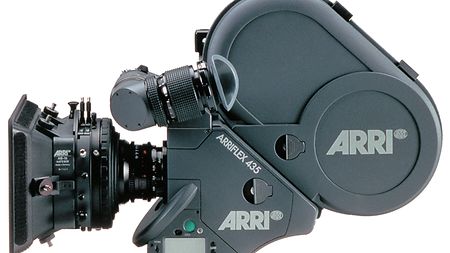1989 – 1994: Larger Formats and Higher Speeds
Filmmakers had been interested in larger formats from the moment Edison and Eastman standardized the 35 mm 18x24 mm frame. The ARRIFLEX 765 arrived 90 years later—in 1989. It was silent, sync sound, 2–100 fps, with an adjustable, motorized mirror shutter, and a separate motor for the camera movement, synchronized electronically to reduce noise — something unheard of at the time. This principle would be used in the next cameras, the ARRIFLEX 535 in 1990 and 435 in 1994.
Technically, the 535 was a marvel, with an adjustable viewfinder system for spherical, anamorphic, 100% optical or fractional video assist viewing. But crews found it big, bulky and heavy. ARRI quickly went back to the design table and released the lighter, smaller and more practical 535 B in 1993. Vittorio Storaro AIC, ASC didn’t mind; in 1993 he shot "Little Buddha" with Bernardo Bertolucci using ARRIFLEX 535 and 765 cameras. Nor did Roger Deakins CBE, ASC, BSC, who liked the 535 and its coaxial magazine that he could tuck under his arm while operating on a fluid head. Roger commented, “It would be interesting to work this out—what comes first: the ambition or technology? People’s ambitions for the way films can be made and the quality of the work are forever expanding, and that forces technology in new directions.”
